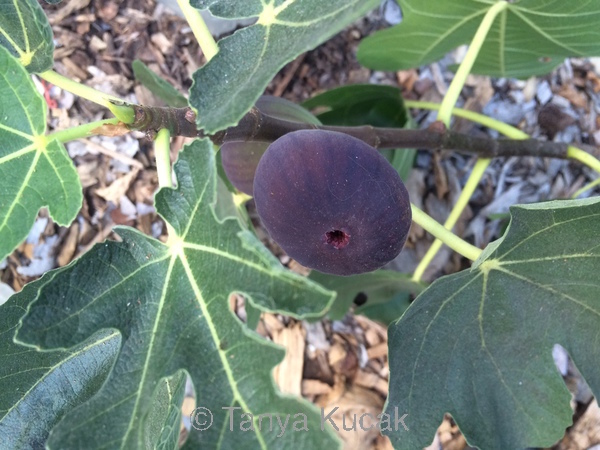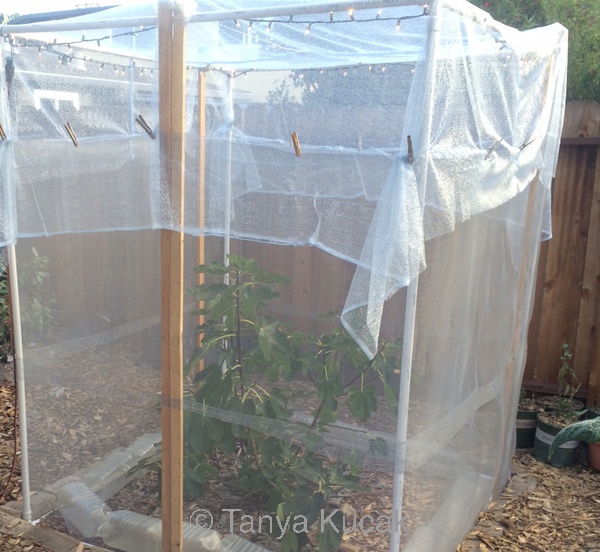
The best time to plant natives is in the fall and winter, assuming that seasonal rainfall is sufficient to help get them established. But if not much water falls from the sky, wildlife desperate for food and water may be attracted to your new plantings. Even plants listed as “deer resistant” can get browsed as critters taste whatever your garden smorgasbord offers. If the plants are small, a few nips can be fatal.
Fencing, tree tubes, and do-it-yourself cages are some ways to protect your young plants. Even if your plants are intended to support wildlife in your garden, the plants need to get big enough to withstand inevitable nibbling.
In my suburban garden, I had occasion to experiment with critter exclusion when the figs in my edible garden started getting munched. The tree is relatively young, with only a couple dozen figs this year. A mockingbird that visited my blueberry plants earlier in the year had his eye on the ripening figs, and the ubiquitous squirrels and roof rats had already absconded with some not-quite-ripe figs and sampled green ones. It was time to get serious.
Figs are mediterranean plants that do well in California, but the same ideas can apply to protecting vulnerable natives.

Ripe fruit can be an irresistible attraction for critters. If you want the fruit for yourself, find a way to inhibit predation.
I casually mentioned the need to protect the figs to my partner, who enjoyed building a greenhouse from internet plans last year, and he accepted the challenge. When building a protective structure around an existing plant, it's important to allow air space between the structure and the plant, so that critters can't climb or land on the structure to take a bite. We got white PVC pipe and 3-way connectors to make a frame 5 ft. square and 6 ft. high, allowing room for the eventual maximum size of the tree. All the parts of the structure are pressure-fit, not glued, so it will be easy to take apart.
For a few days, I watched to see if the structure itself was a deterrent: the force-field effect. Alas, no. The one ripe fig soon disappeared. So we stapled aluminum screening to wood uprights, forming a continuous “wall” about 5 ft. high with a “door” for access. We left some screening loose at the bottom and secured it by placing bricks around the perimeter, both to foil digging and to anchor the structure.

Exclusion is often the best way to protect plants from critters. To prevent enterprising rodents from squeezing between two rows of screening, we sealed the 2-inch overlap by sewing the screens together with nylon fishing line and a curved upholstery needle.
Finally, to make sure the mockingbird couldn't peck at any of our precious figs, we bought some tulle at a fabric store, sewed two pieces together to make it wide enough, draped it over the top, and clothespinned it to the rest of the structure. Since birds don't like to fly into spiderwebs, we chose a tulle with a spidery weave.
To make it festive, my partner added LED christmas lights to the top of the fig pavilion.

Make your critter-exclusion structures a garden feature by decorating them! I smile every time I look out the kitchen window at night and see the fig pavilion lit up.
Once we've harvested all the figs, we can disassemble the structure and store it for next year: fold up the tulle, roll up the screening and wood, and take apart the PVC pieces.
Oh, and the Black Jack figs are delicious!

It's wonderful when the gardener gets a luscious edible reward: sun-ripened plump, delicious Black Jack figs.
© 2016 Tanya Kucak